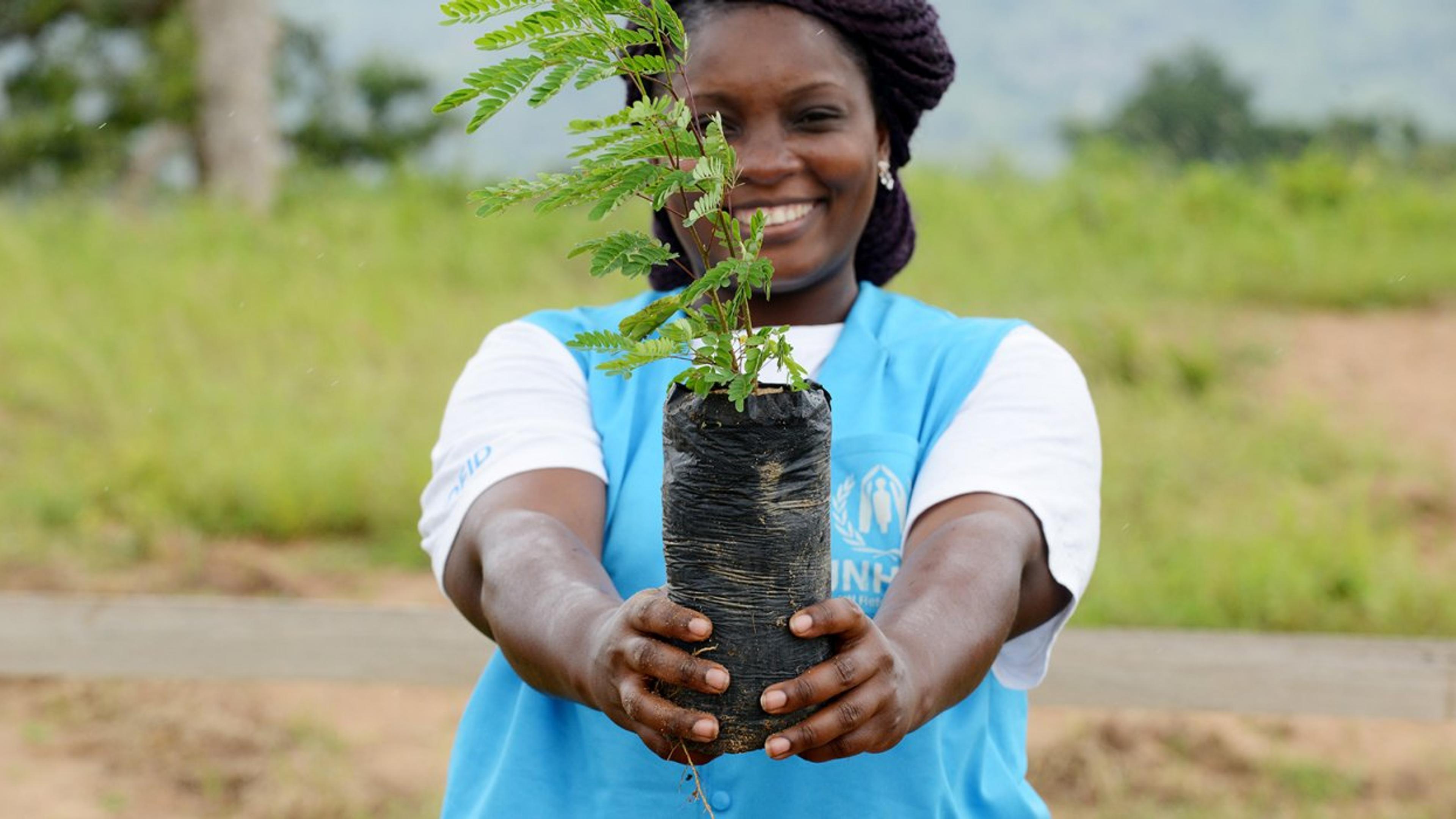Reforestation through cutting edge techniques
 © LandLife
© LandLifeWhat is the humanitarian challenge and the scope of the project?
Sudan has had a long history of generously hosting refugees and asylum seekers who have fled violence, persecution and other dangers in their countries of origin. The hosting areas in Sudan are among the poorest and most environmentally degraded in the region. The presence of South Sudanese refugees in White Nile State has resulted in increasing unsustainable demand on forest resources. Both refugee and host communities depend completely on fuel wood for cooking, which is in short supply.
The traditional approach to mitigate these challenges has been to support planting and management of trees. These approaches, however, have showed limited successes due to poor technical capacity and the physical environment in many refugee hosting regions. The UN High Commissioner for Refugees (UNCHR) therefore partnered up with Land Life Company to innovate better solutions. Together, they have developed a technology that boosts survival of young trees, while reducing water usage and reforestation costs. The results are healthy trees that improve tree survivorships in humanitarian settings from an average of 0-20 % to between 75-95%.
What were the main outcomes?
During the project period, approximately 2,500 hectares of land were planted via cocoon technology, 35 hectares planted via demi-lune technology and 2,390 hectares planted with seedlings. About 9,000 seedlings were planted within Abou-dolloh forest in White Nile state and Aljablian.
The cocoon technology are cartons that work like biodegradable ‘incubators’ designed to support saplings through their critical first year by providing water and shelter while stimulating a healthy and deep root structure, tapping into the water supply beneath the surface. The demi-lune technology, also defined as half-moon system, is a kind of water irrigation technology which is designed in the shape of a half-circle in a variety of sizes. This helps water harvesting in semi-arid areas and helps to improve soil fertility.
The process of plantation began with collecting pure tree seeds, preparing the land, transporting the seedlings to plantation sites, and then planting the seeds and seedlings. Weeding in the seedling plantation was conducted via cocoon and demi-lune planting technology. These activities were carried out with active participation from both refugees and host communities. Under this project, UNHCR together with its implementing partner the Forests National Corporation (FNC) also constructed one seedling nursery – which has the capacity to produce 200,000 seedlings per year.
“I joined the project to earn a bit of money for food and some clothes and to learn new skills about tree plantation,” says Geal Deng Nyakong, a South Sudanese refugee. She hopes to use these skills back home or in future work at nearby citrus plantations.
In addition to the above, 95 trainings sessions were conducted across the nine camps and surrounding villages targeting 9,000 refugee participants and 3,000 participants from the host community. The topics of these training sessions were focused on environmental awareness, importance of ecosystem as well as information intended to discourage both groups from participating in deforestation.
“The community benefits a lot from this project, and we are grateful for it,” says Hawua Ahmed from the host community.
Finally, remote tree monitoring application developed by Land Life Company to monitor the status of tree growth was adopted. FNC staff trained on this monitoring application were equipped with knowledge about seedling monitoring and how to measure tree height in order to monitor the seedling status.
Most projects across Sudan were affected negatively by the global COVID-19 pandemic. More specifically, however, economic instability due to the high inflation, caused drastic fluctuations in the prices of fuel, seeds, labour, transportation, the material for nursery construction and remained a persistent challenge. In addition to this, a severe shortage of fuel also contributed to delays in distributing the seeds and equipment to the Cocoon and woodlot sites.
Despite the early kick-off of the plantation, the project experienced a huge flood which disturbed some of growing trees planted in the forest reserves. The location of the forest and soil type also contributed to this. Poor infrastructure surrounding the plantation area meant access to the area was difficult during the time of the floods. In addition to this, the rainy season also made the construction of the fence difficult. Following this, in the new work-plan, FNC considered the location of the plantation and timing of the rainy season into the sequencing of the activities to avoid the same issues.
With regards to the technology, the cocoon trial is a new and not particularly well-known across Sudan. Through the support from HIP Norway, UNHCR was able to introduce this technology which was received well by actors involved in the project. The technology will play a critical role in overcoming rain shortages in the targeted locations via the cocoon trail. Moreover, all actors involved in the project, including FNC, members of the refugee and host communities, will also benefit from this new knowledge.
Who are the proejct partners?
This project is a partnership between UNHCR, Forest National
Corporation (FNC) and Land Life Company.